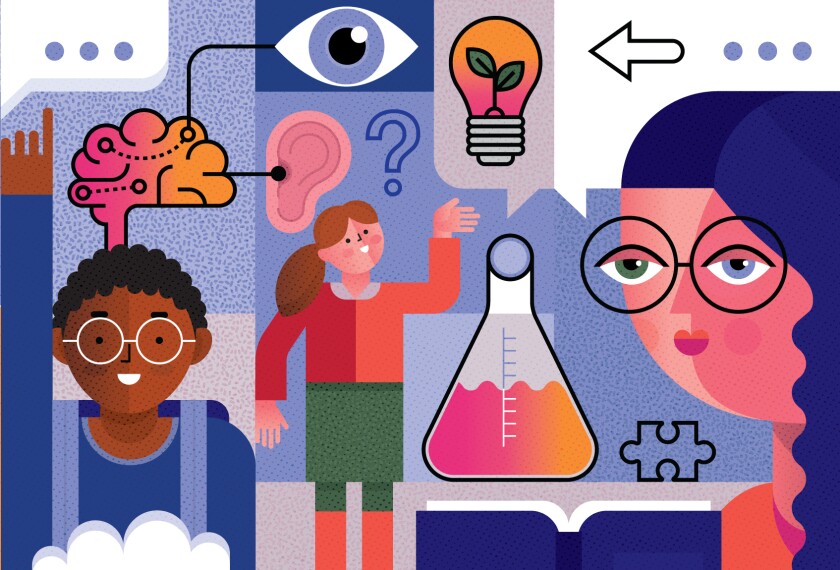Want to show students how glaciers grow and shrink without traveling to Antarctica? How about studying immune cells, but without the aid of an expensive electron microscope?
Online simulations and virtual experiments are allowing students to re-create lab activities that might be too time-consuming or expensive to do in the classroom.
In addition, there are hundreds of science websites that bring videos, interactive lessons, and data into classrooms, everything from NASA’s offerings on weather and the Mars rover, to National Geographic’s animal videos.
Students are also using specialized equipment—like digital probes, motion detectors, or wireless spectrometers—to complement hands-on experiments.
But the biggest way some science teachers say their classes have changed through technology is that students come to class already armed with technology tools. Nearly everyone has a smartphone with a stopwatch and video capability to record and analyze experiments. And apps for a compass, a level, or an accelerometer are easy to come by, said Sandee Coats-Haan, an Advanced Placement physics teacher at Walnut Hills High School in Cincinnati. “Kids come to class with more equipment than I can give them in a lot of cases,” she said. Although tools like probeware and motion sensors can be helpful high-tech accessories to experiment with, costs can be a barrier, educators say. Often, there may not be enough to go around. And shaky technology infrastructure for tools that need Wi-Fi, for example, means teachers always have to have a backup when technology fails.
But simulations that allow students to easily see what happens when variables change in experiments have become a critical component of science education in recent years. University of Colorado’s PhET Interactive Simulations is a popular tool, and the Howard Hughes Medical Institute’s BioInteractive site also provides apps, animations, videos, and virtual labs. The ability to easily graph outcomes and spot trends, with sites like Gizmos, helps students better understand data being collected.
“They’re doing inquiry learning. Instead of telling them how things work, they can manipulate parts of the system and see what effect it has,” said Kristen Kohli, the science department chairwoman and district curriculum coordinator in the Buckeye Union High School district in Arizona, who is also a high school biology teacher.
But teachers have to make sure they find a balance between using a simulation and hands-on science, Coats-Haan said. “If you do everything with a simulation, students think everything always works out perfectly,” she said. “They have to see real life.”
And because there are so many shiny new science tech tools, teachers have to be especially careful to incorporate technology that furthers learning, instead of the use of the tool itself. “It’s an easy trap to fall into,” Kohli said. “The focus still needs to be on the content—not on all the bells and whistles.”




